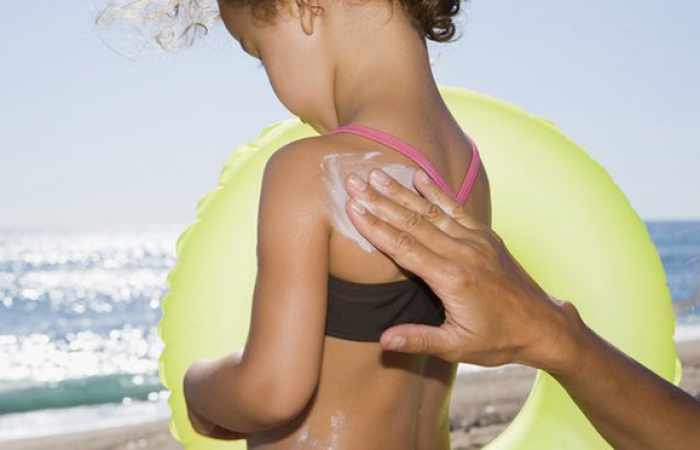The UV-absorbing chemical found to poison coral in several ways. In a study published in 2015 and in research set for publication later this year, biologists found that oxybenzone contributes to bleaching, has a similar effect on DNA as gasoline, and disrupts reproduction and growth, leaving young corals fatally deformed.
“It causes weird deformities in soft tissue and also causes the coral larvae to encase itself in its own skeleton, in its own coffin,” said Craig Downs, one of the study authors.
The recent research builds on several years of work by teams in Italy, Spain, Israel and Iran, and found that even small doses of oxybenzone – about a drop in six-and-a-half Olympic swimming pools – damages coral. The researchers found concentrations 12 times that rate in popular waters off Hawaii and the US Virgin islands. Hawaii lawmakers are proposing a ban on the use of such sunscreen on the islands.
In the Caribbean, Downs said, the researchers noticed that bays popular with sunscreen-slathered tourists had dead and sterile coral, while those with little traffic were healthy. “In one there’s just nothing there, it’s a desolate wasteland,” he said. “Two bays over, at a $1,000-a-night resort, where very few people go, there’s lots of coral recruitment, lots of spiny sea urchins.”
The scientists argue that this difference shows that climate change alone is not responsible for coral die-offs, and that such cases add to evidence that pollutants created sterile, “zombie” reefs. Downs’ team has also found that oxybenzone has toxic effects on fish larvae and embryos.
The findings by Downs and his colleagues has some limits, for instance pending review of unpublished work. Mike van Keulen, a biologist at Murdoch University in Australia, also noted that it was performed in a laboratory, raising concerns about how its findings apply in the wild. But van Keulen agreed that their field readings were very high, meaning Downs’ fears were reasonable, especially around tourist spots like Hawaii, the Caribbean and parts of the Great Barrier Reef.
“The more insidious aspect of the toxicity is the ever-increasing pollution load in the world’s oceans,” van Keulen said. “They’re all connected, and background levels of pollutants are becoming a major concern in even very remote locations.”
Like microplastics, sewage and coastal development, sunscreens add stress that erode coral resilience, he said. “This means that reefs are weakened and can’t bounce back from the global events, like bleaching, acidification, etc.”
Hundreds of sunscreen products use oxybenzone, including those made by Coopertone and Banana Boat. Some manufacturers have started to produce sunscreens marketed as “reef friendly”, but scientists warn that, like the labels “healthy” and “natural” for food, there is little to no regulation over such claims and consumers should check ingredients.
L’Oréal, one of the companies that has publicly disputed the research, did not respond to a request for comment. A company researcher, Marc Leonard, told Nature earlier this year that lawmakers should not act without more studies.
Lobbying groups, including the DC-based Consumer Healthcare Products Association, also oppose the ban. The latter group’s vice-president, Carlos Gutiérrez, told Hawaiian lawmakers late last month that he believes climate change is the primary driver of coral death.
“A greater standard of evidence must be considered before a product so valuable to people’s health is prohibited,” he said. The American Academy of Dermatology has said oxybenzone is safe for humans, but Downs said that, based on research of its effects, he no longer felt comfortable letting his children in a swimming pool.
Hawaiian tourist agencies have largely argued the ban is needed to protect reefs, one of the state’s most valuable attractions. The National Oceanic and Atmospheric Administration has estimated that coral reefs are worth tens of billions to the US for their value to fisheries, tourism and as buffers against storms.
Regional offices of the National Park Services, including in Hawaii, the Virgin Islands and south Florida, advise swimmers use sunscreens made with zinc oxide or titanium oxide, which biodegrade, and several Mexican preserves require visitors use biodegradable sunscreens. Downs said that consumers should take extra care not to use sunscreens advertising “nano” zinc oxide or titanium oxide, saying that below 120 or just 100 nanometers is “significantly toxic”.
Scientists also warn against using aerosol cans of sunscreen, because the spray mostly falls onto sand, where it gets washed into the sea or into sea turtle nests.
/Guardian/
More about: #Sunscreen
















































